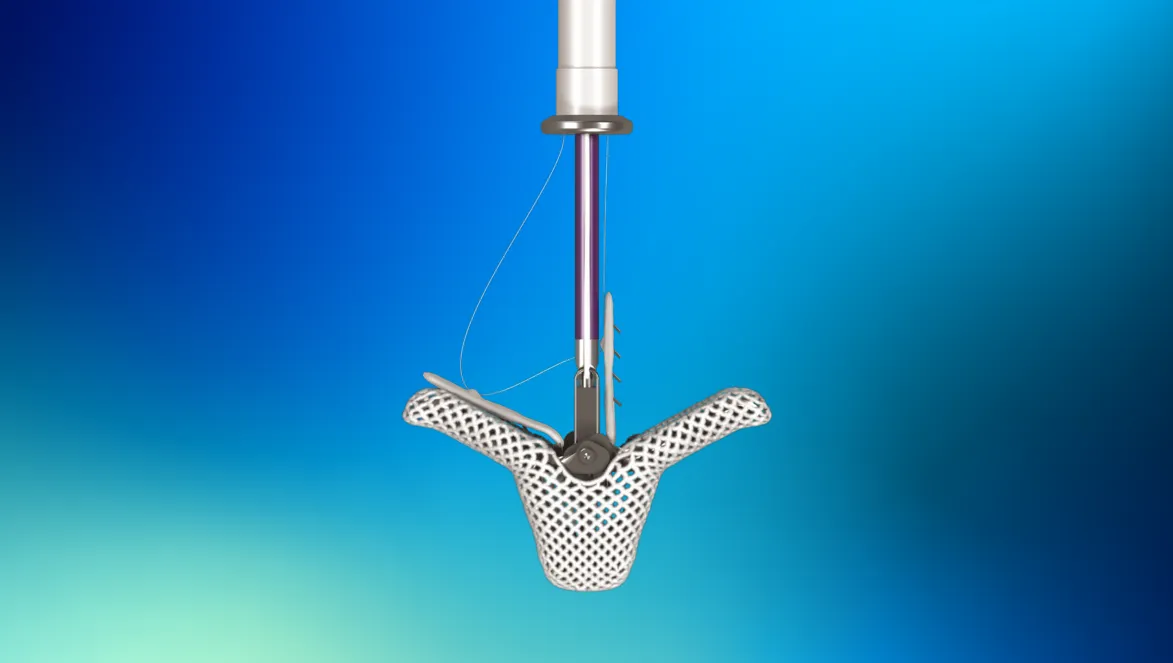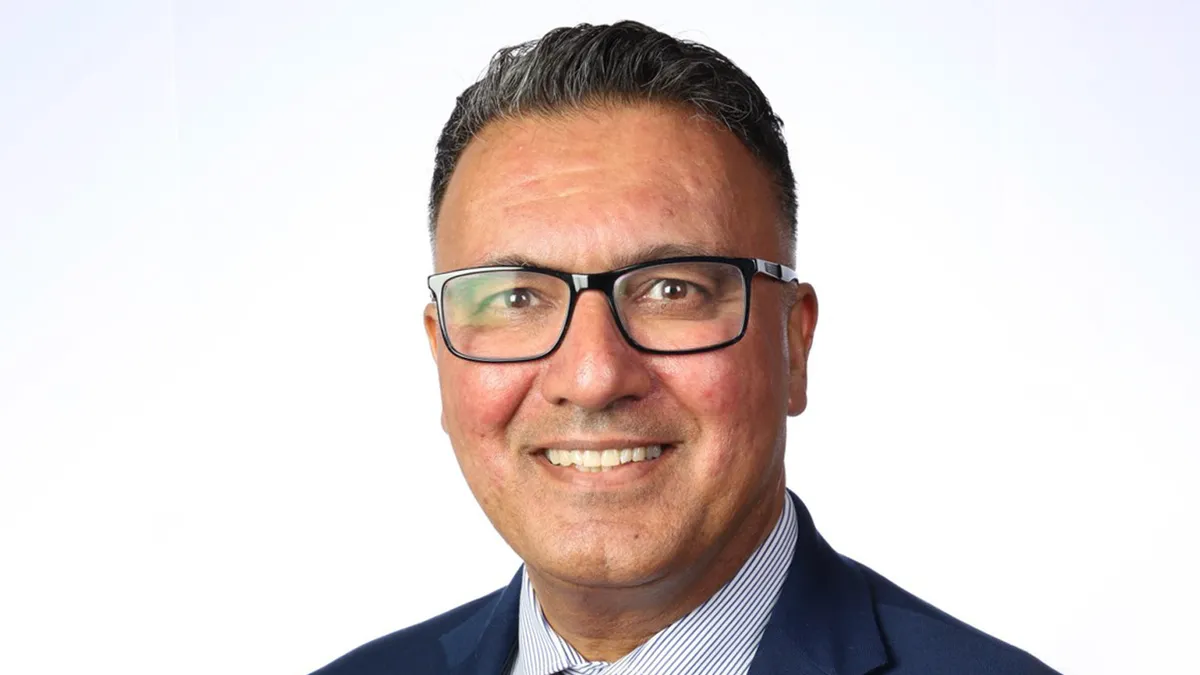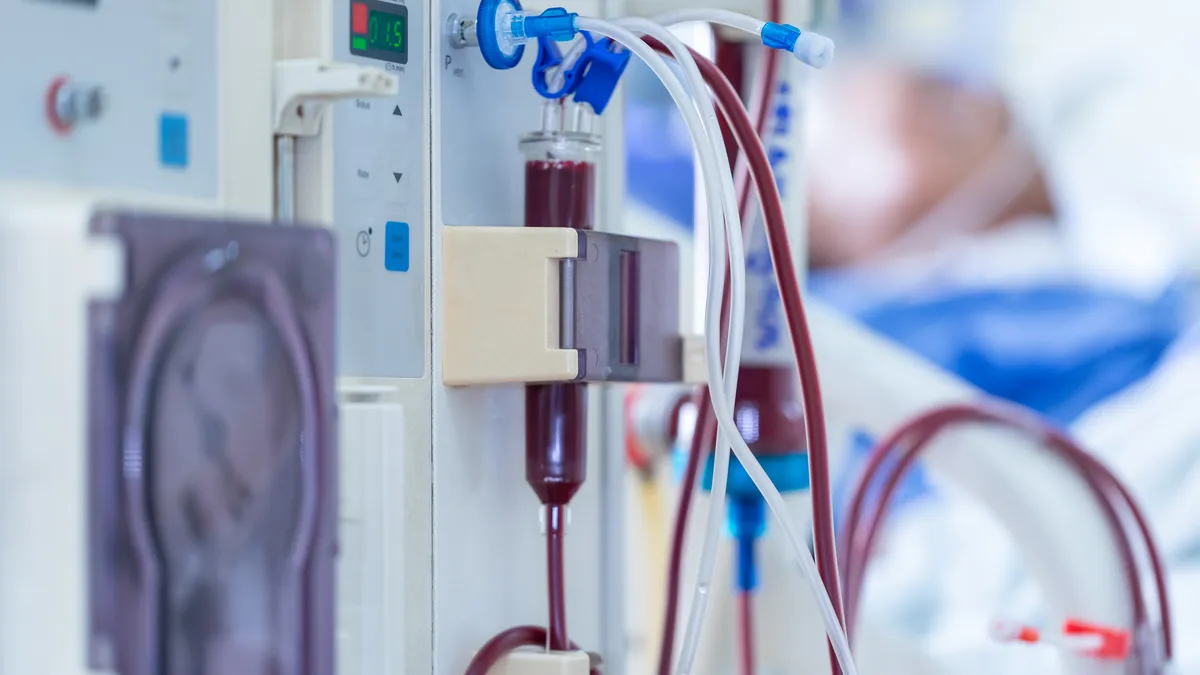Abbott secured Food and Drug Administration approval last week for Triclip, a device to give patients too frail for open-heart surgery a less-invasive option for repairing a leaky tricuspid valve. The technology is based on Abbott’s successful Mitraclip repair device for the mitral valve but designed for the tricuspid.
Triclip is now the second transcatheter device approved in the U.S. to treat patients with tricuspid valve regurgitation, after Edwards Lifesciences in February said it gained the FDA’s nod for a valve replacement system called Evoque. The two companies took different treatment approaches: Edwards developed a replacement valve, while Abbott contends that repair is a better option.
MedTech Dive spoke with Abbott’s Nadim Geloo, senior medical director of the structural heart division and an interventional cardiologist, to learn more about the U.S. launch of Triclip, how the device differs from Edwards’ tricuspid replacement system, and what the company has planned in the transcatheter aortic valve market.
This interview has been edited for length and clarity.
MEDTECH DIVE: What medical condition is Triclip designed to treat?
NADIM GELOO: Tricuspid regurgitation is the name of the disease, and it's a debilitating disease. It's caused by a valve that rests between the two chambers in the right side of the heart. This is designed as a one-way valve, and it's supposed to allow blood to flow from the atrium into the ventricle, which then sends it up to the lungs. Unfortunately, with tricuspid regurgitation, the flaps, or leaflets, of the valve, don't meet correctly; they don't create a tight seal.
When the heart squeezes blood up towards the lungs, it actually leaks back into the right atrium because of this defect, and unfortunately, this ends up causing a lot of fluid buildup for patients in their body, in their legs, in their abdomen. It causes them to feel generally very weak and tired. Some people are not able to lay comfortably because of the abdominal discomfort, and there is a long list of other effects that just reduces the quality of life for these patients.
I'll just speak as a physician who's still practicing and actually did these types of procedures for many years. When I saw these patients in the office, they were so debilitated. Surgeons oftentimes did not want to operate on these patients. You were essentially treating it with medical therapy, which for the most part amounts to diuretic therapy. Diuretics can be very uncomfortable for patients to take. For many patients, they just don't do it. They're living this existence where they can't enjoy life.
How many patients could benefit from this treatment?
In the United States, up to 1.6 million are estimated to have clinically significant tricuspid valve regurgitation, and across the world, that number goes up to approximately 70 million. European physicians have deployed thousands of these clips in patients, and we've noticed a significant outcomes benefit, with patients feeling significantly better with a measurable improvement in their quality of life.
What is Abbott's plan for rolling out the device in the U.S.?
The most important part of any device launch is ensuring the doctors are thoroughly trained on conducting the procedure and selecting the right patients. We will roll out the device in the U.S. at centers that were involved in the clinical trials because those are the most experienced centers, and then we'll have a tiered approach thereafter.
We want to ensure that this is a safe procedure for the patient. It was demonstrated in the clinical trial that 98% of patients had no adverse effects from the procedure at 30 days. Of course, the outcomes from the trial were also fantastic, with 50% of the people who received Triclip experiencing a more than 15-point improvement in the KCCQ [Kansas City Cardiomyopathy Questionnaire] quality of life score. We want to achieve these results straight out of the gate, and we're going to be very careful and deliberate in the way that we roll it out. That said, it’s going to be something that we want patients to have access to much sooner than later.

How does Triclip compare to Edwards' Evoque tricuspid valve replacement device?
We feel that tricuspid valve repair is the better option for the majority of patients, and that's based on a lot of history. If you go back to the surgical literature, before any catheter-based devices were available and surgeons were doing surgery to either replace or repair the valve, mostly in the mitral valve population, the vast majority choose to repair the valve because they feel results from repair are better for patients.
If you translate that to the catheter-based space, we feel the same. In the mitral and tricuspid, we feel that repair is the better option for patients. It's less invasive. You don't have a large valve there, which sometimes may require more aggressive anticoagulation early on.
But I think the important thing to know is the options are there for patients, and that's who wins.
What has been the response to Triclip in the countries where it has been available for the past couple of years?
We've talked to a lot of physicians about how their patients do, and we hear great anecdotal stories about that, but more importantly, we have data from registries, particularly a large registry called the Bright registry. We saw great results, as we saw in the Triluminate trial, with patients feeling significantly better and having very few bad outcomes or adverse effects. While this is a new device to the United States, regarding approval, it has been an approved device overseas since 2020, and has demonstrated fantastic outcomes.
What does Abbott have planned in the aortic valve market?
We have a device that's approved, called the Navitor, available both in Europe, and currently in the United States for patients who have an increased risk for heart surgery. We are conducting trials to achieve, pending trial completion, approval for all risk patients in the United States.
It's a self-expanding valve, which means a balloon is not required to deploy it. Then it has tissue leaflets that open and close, and it replaces the aortic valve. You deliver it with a catheter from the femoral artery in the leg, and patients have the procedure and are often up and walking the same day.
We have launched a clinical trial, called the Envision trial, in the United States that hopefully will lead to approval for all risk patients — low, intermediate and high risk — and we're confident that this valve is the right valve for patients.


















